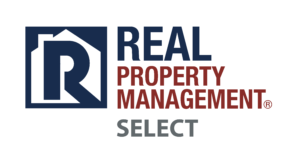The Lazy 1031 Exchange in Real Estate Investing
Real estate tax strategies often involve complex maneuvers and third-party involvement, but there’s a simpler approach known as the “lazy 1031 exchange.” Before delving into this strategy, let’s revisit the basics of a standard 1031 exchange.
Understanding 1031 Exchanges
Section 1031 of the IRS tax code allows investors to execute a “like-kind exchange,” deferring capital gains taxes when swapping one similar asset for another. While this strategy facilitates the acquisition of larger, better-cash-flowing properties without immediate tax implications, it comes with strict timelines and the need for a qualified intermediary.
The Lazy 1031 Exchange Unveiled
The “lazy 1031 exchange” is particularly advantageous for those engaged in passive real estate investments, such as real estate syndications. Here’s how it works:
- Passive Real Estate Syndications:
Investing passively in real estate syndications provides substantial tax write-offs in the initial ownership years.
- Utilizing Paper Losses:
The on-paper losses generated in the first few years can be employed to offset other passive income or capital gains, especially when a past real estate investment sells.
- Offsetting Gains:
Suppose you’ve earned a profit from a property sale. By reinvesting in a new real estate syndication in the same year, the upfront losses on paper offset the gained profit, resulting in zero capital gains taxes.
Leveraging Depreciation for On-Paper Losses
Two key components contribute to on-paper losses:
- Cost Segregation Studies:
Syndication sponsors often conduct cost segregation studies for large commercial properties, accelerating depreciation by reclassifying parts of the building into shorter timelines.
- Bonus Depreciation:
The Tax Cuts and Jobs Act of 2017 introduced bonus depreciation, allowing investors to accelerate depreciation further. This strategy is effective until its full phase-out by 2027, unless renewed by Congress.
Passive Real Estate Investments and Infinite Returns
Continuously reinvesting proceeds from one passive real estate investment to another allows for perpetual tax deferral. The “laddering” of on-paper losses, coupled with capital reinvestment, results in an ongoing cycle of tax efficiency and sustained returns.
Hassle-Free Investing
The “lazy 1031 exchange” eliminates the complexities associated with traditional 1031 exchanges. There’s no need for a qualified intermediary, strict timelines, or property closings. The strategy simplifies the process to merely investing in a new real estate opportunity within the same calendar year.
As a busy professional, entrepreneur, and expat, simplicity and efficiency matter most. Passive investments, including the “lazy 1031 exchange,” provide hassle-free opportunities for sustained growth and tax advantages.
Invest wisely, keep it simple, and enjoy the benefits of a streamlined real estate investment strategy.
